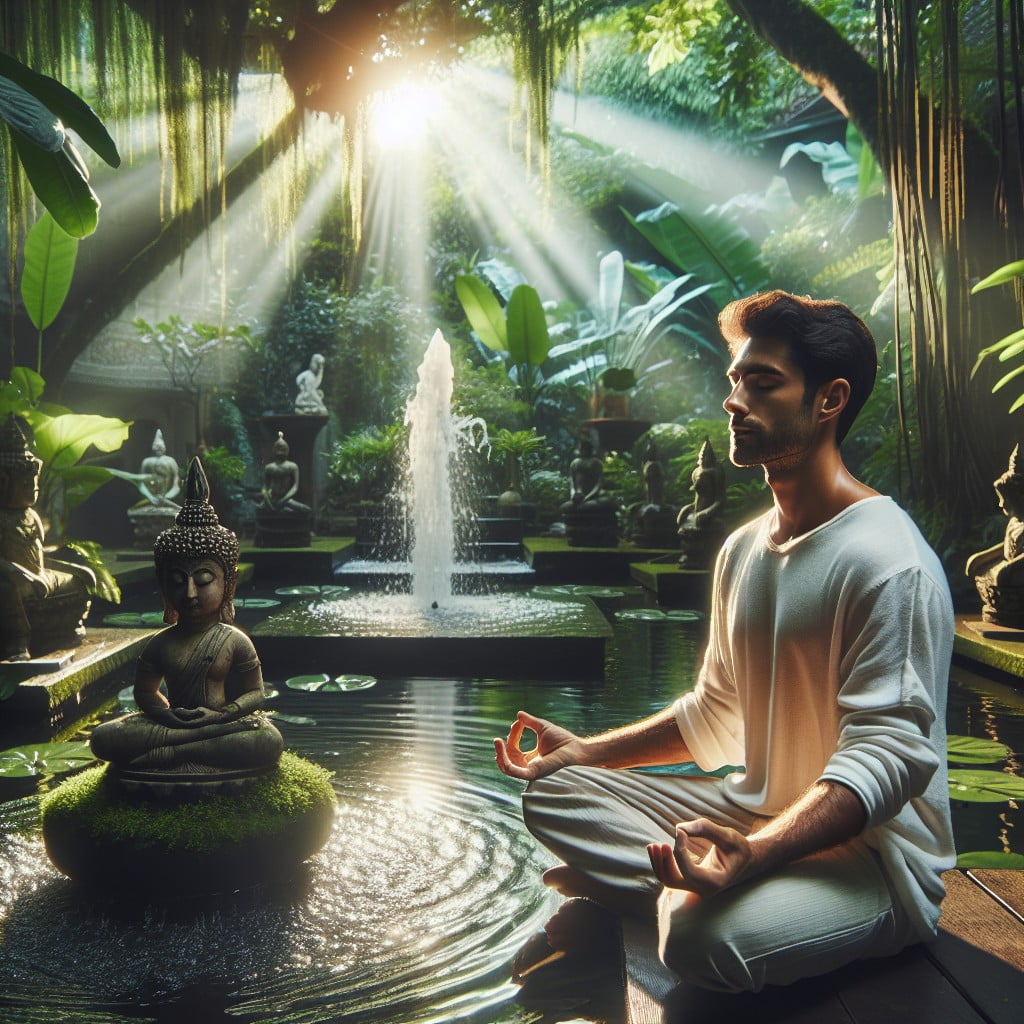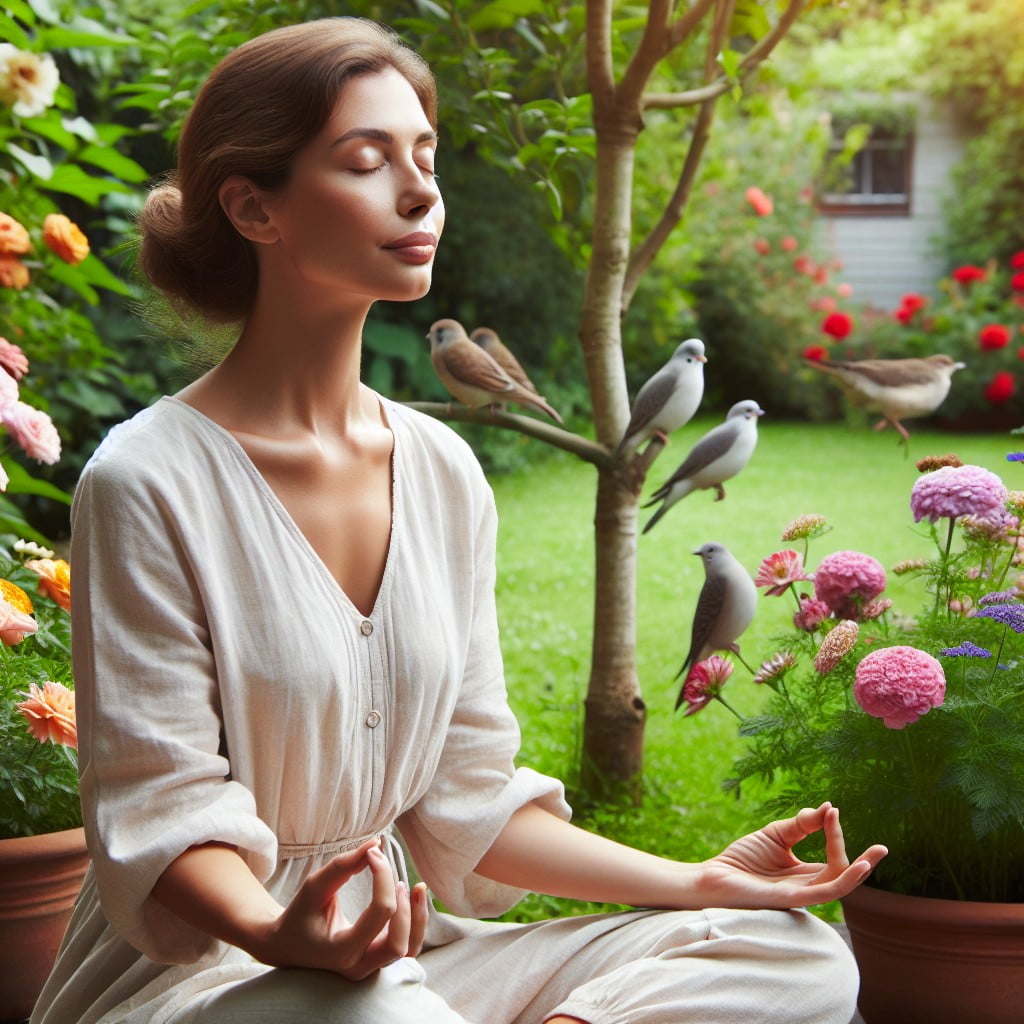Explore what to do after meditation because it’s the linchpin to reaping the full range of its benefits and enhancing your mindfulness journey.
After completing your meditation session, it’s essential to transition back into your daily routine mindfully. This process can be as important as the meditation itself, as it allows you to carry the calm and clarity you’ve cultivated into the rest of your day.
This involves simple steps like taking a moment to appreciate the peace you’ve achieved, gently moving your body to wake up your muscles, hydrating, and setting a positive intention for the rest of your day.
In this article, you’ll discover detailed guidance on these steps and more, ensuring you maximize the benefits of your meditation practice.
Key takeaways:
- Reflect on your meditation experience
- Practice mindfulness in daily activities
- Ground yourself through breathing, touch, movement, and eating
- Journal your insights and progress
- Engage in mindful walking and other mindful activities
Reflecting On the Meditation Experience

Consider the quiet moments immediately following your meditation as a precious time to delve deeper into self-awareness. Ask yourself what was different about today’s session compared to others? Did you encounter any challenges? If yes, how did you navigate through them? Did you feel a sense of tranquility or were there bouts of restlessness? The goal isn’t to critically assess, but rather to observe with kindness and patience. This reflective practice helps in deepening the understanding of one’s inner landscape, fostering an enriching relationship with the self.
Practicing Mindfulness Post-meditation

Continuing with mindfulness once your meditation session ends can significantly extend its benefits. Think of it as carrying the calmness of your session into the rest of your day. Here are some ways to achieve this:
- 1. Maintain your mindful state: Carry the meditative mindset forward by observing your environment, paying attention to sounds, scents, and objects around you.
- 2. Practice mindful eating: Savor your meals, concentrating on the taste, texture, and aroma of your food. This can also help with digestion and contentment with the meals.
- 3. Apply mindfulness in conversations: Listen attentively without the urge to respond instantly. Try to understand the other person’s perspective.
- 4. Use mindfulness cues: Choose regular activities such as brushing your teeth, taking the stairs, or washing your hands as reminders to return to a mindful state.
- 5. Mindful acceptance: Accept the present moment as it is, without attempting to change or judge it. This can reduce stress and increase contentment.
Remember, mindfulness isn’t about achieving a state of constant bliss. It’s about accepting the present moment as it is, and finding tranquility in that acceptance.
Techniques to Ground Oneself After Meditation

Breathing is key. Once you’ve finished your meditation, don’t rush to get up. Spend a few moments focusing on your breath and sensations in your body.
Physical touch plays a role as well. Gently rub your hands together to stimulate your senses and generate warmth. This will bring you back to the physical world.
Movement is an essential tool to reorient yourself. Simple activities like stretching your arms and legs, rolling your shoulders, or even rotating your ankles can be quite effective. These actions invite your body back to the here and now.
Mindful eating is another method to ground yourself. Selecting a fruit or snack to enjoy mindfully post-meditation brings your attention to texture, taste and pleasure of eating, promoting a smooth transition from your meditative state to a more active mindset.
Lastly, practice gratitude. Appreciate the time you took for yourself, acknowledge the peacefulness you’ve cultivated, and express thanks for this experience. This acts as a bridge, reinforcing the quality of calmness and carrying it forward into your regular routine.
Incorporating Journaling As a Post-meditation Practice

Journaling presents an opportunity to capture insights or breakthroughs experienced during meditation. To get started, keep a designated notebook and a comfortable, easy-to-write-with pen at your designated meditation space.
Immediately after the conclusion of your meditation, while your mind is still brimming with the clarity, calmness, and insights it has received, open your journal and make note of your inner experiences. Pen down any intellectual or emotional revelations, however small or big they may seem. The act of writing can often consolidate these experiences and deepen your understanding.
Jotting down things like how long the meditation was, what techniques you used, and how you felt before and after can highlight the progress made over time. If you encountered any challenges or distractions during the session, make a note of them as well. This practice can aid in identifying patterns and help you fine-tune your meditation practice for better results.
Last**l**y, remember that this journal is personal. Hence, it’s not obligated to make sense to anyone but you. Treat this journaling period as a time of introspection and self-study, and allow the process to unfold naturally.
Engaging in Mindful Walking Post Meditation
Mindful walking is an effective way to extend the calmness and clarity gleaned from your meditative practice. By focusing your attention to the rhythm of each step, you gradually become more attuned with the environment and your inner self.
You can start with shorter walks – maybe five or ten minutes to begin with – and gradually extend the time. Your surroundings can be anywhere, from the confines of your living room to the great outdoors. The idea is to remain present, absorbing and attending to every sensation that comes with each step.
This practice is meant to draw your attention towards your bodily sensations: the feel of your foot making contact with the ground, the shift of your weight from one foot to another, the gentle sway of your arms at your sides. Tune in to the natural rhythm of your walk. If your mind strays, gently bring it back to these sensations.
Remember to maintain a leisurely pace, not rushed. The slower you go, the more you’ll be able to observe and enjoy. Each step should be an experience in awareness, carrying forward the mindful state from your seated meditation into action. In this way, mindful walking after meditation becomes a bridge between static mindfulness and dynamic everyday life.
Suggestions to Maximize the Benefits After Meditation
Delving deeper into your state of mind, explore these strategies to extend your meditation’s influence throughout the day:
1. Implement mindful breathing: Use your breath as a reminder of the calm state you attained during meditation. Whenever you feel overwhelmed, close your eyes and take slow, deep breaths.
2. Seek regularity: Aim for consistency in meditation. Trends indicate that people who meditate regularly gain more long-term benefits.
3. Mindful eating: Treat every mealtime as a practice in mindfulness. Attune to the aroma, taste and texture of the food. Notice the colors and listen to the sounds. This helps maintain your meditative state for a longer period.
4. Doubling as an act of mindfulness, practice gratitude: Show appreciation for little things in life. It enhances positivity and extends the peaceful state from the meditation session.
5. Physical activities: Engage in light exercise, yoga or Tai chi. Not only do these maintain the meditative flow, they promote overall well-being.
Even brief moments of mindfulness during the day can help prolong the tranquil afterglow of meditation, paving way for heightened self-awareness and serenity.
Precautions to Take Immediately After Meditation
Don’t rush to stand up or bounce back into your busy life. Your body might still be in a deeply relaxed state, and hasty movements could lead to dizziness. Allow yourself a few moments to gradually embrace your physical senses.
Stay hydrated. Drinking a glass of water can help reintroduce your body to everyday sensations and act as a physiological cue signalling the end of the meditation.
Avoid jumping straight into strenuous mental or physical activity. This may jar your brain out of its calm state and compromise the benefits of your meditation.
Limit immediate exposure to loud noises and bright lights. Your heightened sense of awareness needs time to adjust back to normal sensory input.
Relish the calmness. Do not be in a hurry to break away from it by rushing to your next task. By remaining in this state for a while, you can extend the benefits of meditation.
Finally, remember not to judge your meditation experience. Whether it was peaceful or filled with thoughts, just acknowledge it without judgement and let it go. This gentle attitude towards oneself is aligned with the spirit of mindfulness and meditation.
FAQ
What should I do after meditate?
After meditation, it's beneficial to remain still for a while, absorbing the tranquility, and then carry this mindfulness into subsequent activities.
What happens immediately after meditation?
After meditation, you'll likely experience feelings of calm and relaxation, potentially accompanied by a sense of euphoria, helping to better manage emotions and cope with potentially distressful situations.
Is it OK to fall asleep after meditation?
Yes, falling asleep after meditation is perfectly fine and can sometimes be a sign of achieving a deeply relaxing state.
What happens after 20 minutes of meditation?
After 20 minutes of consistent daily meditation, the neural connection in our brains that trigger fear reduces, while the association between our reasoning centers and bodily sensation and fear centers strengthens.
How can one extend the benefits of meditation throughout the day?
One can extend the benefits of meditation throughout the day by practicing mindfulness in everyday activities, focusing on the present moment, and repeatedly bringing their attention back to the breath when their mind wanders.
Is there a specific routine to follow post-meditation for optimal results?
Post-meditation, maintain an aura of stillness and mindfulness, incorporating gentle stretches or pleasant activities like journaling or sipping herbal tea to gradually transition back to your daily tasks.
Can integrating mindful practices post-meditation significantly enhance its effects?
Yes, integrating mindful practices post-meditation can significantly enhance the effects of meditation by sustaining the calm awareness and focus achieved during the meditation session.